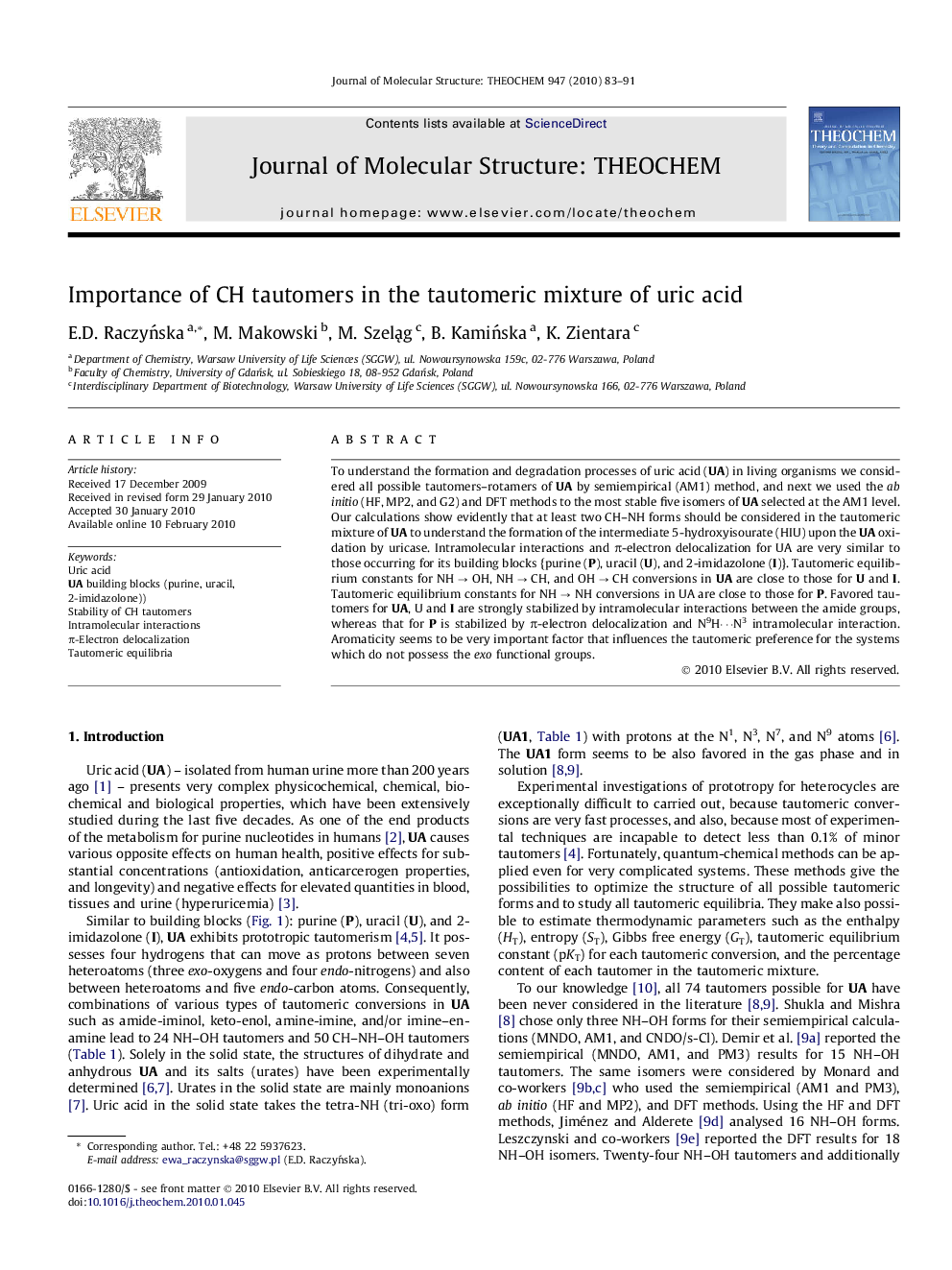| Article ID | Journal | Published Year | Pages | File Type |
|---|---|---|---|---|
| 5416444 | Journal of Molecular Structure: THEOCHEM | 2010 | 9 Pages |
Abstract
To understand the formation and degradation processes of uric acid (UA) in living organisms we considered all possible tautomers-rotamers of UA by semiempirical (AM1) method, and next we used the ab initio (HF, MP2, and G2) and DFT methods to the most stable five isomers of UA selected at the AM1 level. Our calculations show evidently that at least two CH-NH forms should be considered in the tautomeric mixture of UA to understand the formation of the intermediate 5-hydroxyisourate (HIU) upon the UA oxidation by uricase. Intramolecular interactions and Ï-electron delocalization for UA are very similar to those occurring for its building blocks {purine (P), uracil (U), and 2-imidazolone (I)}. Tautomeric equilibrium constants for NH â OH, NH â CH, and OH â CH conversions in UA are close to those for U and I. Tautomeric equilibrium constants for NH â NH conversions in UA are close to those for P. Favored tautomers for UA, U and I are strongly stabilized by intramolecular interactions between the amide groups, whereas that for P is stabilized by Ï-electron delocalization and N9Hâ¯N3 intramolecular interaction. Aromaticity seems to be very important factor that influences the tautomeric preference for the systems which do not possess the exo functional groups.
Related Topics
Physical Sciences and Engineering
Chemistry
Physical and Theoretical Chemistry
Authors
E.D. RaczyÅska, M. Makowski, M. SzelÄ
g, B. KamiÅska, K. Zientara,
